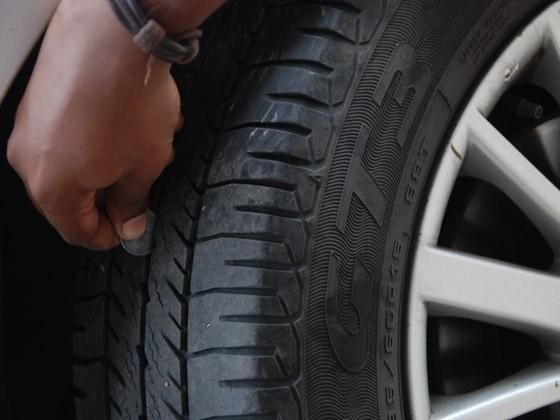Which One is Better for Tyres - Nitrogen or Standard Air?
Modified On Nov 24, 2015 06:30 PM By Ruchika
- Write a comment

Use of nitrogen as an inflator is relatively new to the Indian automobiles. The traditionally used tire inflator Standard or compressed air is composed of 70% of nitrogen, 21% of oxygen, water vapour, CO2, and small traces of noble gases. Taking the advantage of the abundance why should not the usage of nitrogen be preferred over standard air for tyres. Being a new concept in market, should you pay extra and get your car tyres filled with nitrogen? While you ponder that, let us jot down a list of advantages that compel the use of pure nitrogen air in tyres.

Fewer Refills: Nitrogen gas that is used for tyres is 93% - 95% pure. Because of this characteristic it has a relatively lower escaping tendency through rubber than the normal air. As a result, nitrogen inflated tyres require fewer refills than a regular compressed air one. This practice not only reduces the worry about checking the tyres too often but also ensure longevity and extended life of your tyres.
More Stable: Nitrogen has a significant benefit of the absence of water vapour that makes it more stable than the standard air. Presence of moisture in any form causes drastic changes in pressure with the severe temperature swings. So, nitrogen filled tyres will remain properly inflated for a longer period in the frequently fluctuating temperatures of India.

Leaks Less: As per the studies, the molecules of nitrogen are larger than the molecules of air. Consequently, they tend to lose pressure at lower rate from the tyre. Hence, the tyres remain correctly inflated for a longer period.
Reduced Tyre Degradation: The water vapour present in the air turns into liquid when the air pressurizes and gets collected in air storage tank. This water turns into vapour at the high temperature due to tyre spin and expands with intensity adding extra air pressure in tyres. Nitrogen is also devoid of oxygen that speeds up the oxidation of the inner lining of the rubber tyre and leads to the corrosion of aluminum rim and steel. Nitrogen, being a dry gas reduces the rate of degradation of tyres, ensuring a longer and stable tenure without much stress.

Contrasting the above list of advantages filling the tyres with nitrogen has a few disadvantages.
Critics say that while nitrogen help in reducing degradation of the inner lining, the outer wall will any way corrode over time and will wear out long before it has been destroyed by oxidation.
Also, nitrogen filling is expensive because of the availability issue of the outlets offering nitrogen inflation services. Moreover, standard air filling service is provided for free at any petrol pump around the country.






